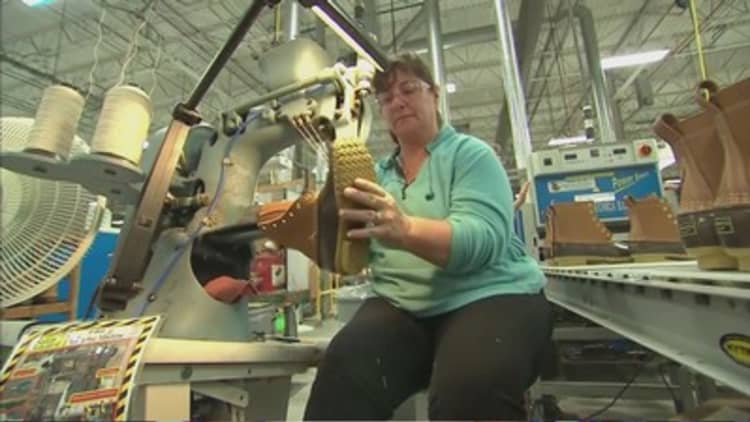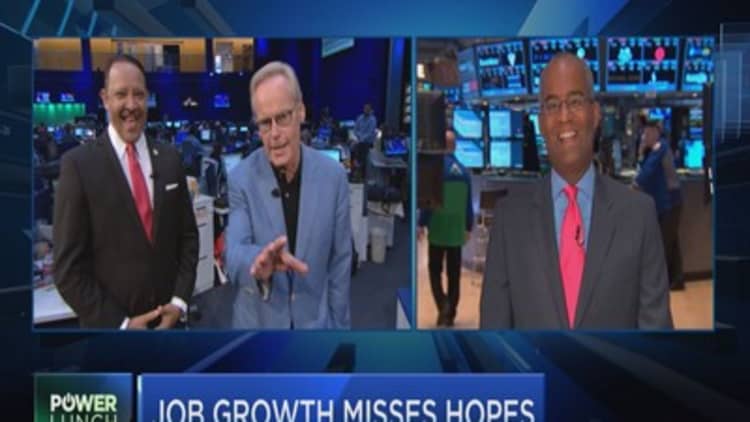


American companies kicked off the summer with modest growth in hiring, sending nonfarm payrolls up 223,000 in June, according to Labor Department numbers released Thursday.
In addition to the payroll growth, the unemployment rate ticked lower to 5.3 percent from 5.5 percent, due largely to a sharp decline in labor force participation, which fell from 62.9 percent to 62.6 percent, its lowest level since October 1977. A broader measure that includes those who have stopped looking for work or working parttime for economic reasons slipped as well, from 10.8 percent to 10.5 percent.
Economists polled by Reuters had expected the number of new jobs to total 230,000 in June, with the unemployment rate at 5.4 percent.
"People had expected a stronger report after the very strong report in May. Instead what we're seeing is still just grinding higher," said Kate Warne, investment strategist at Edward Jones. "It's strong enough to support stock prices, it's strong enough for the Fed to say they're considering raising interest rates in the fall, and that's where we stay."
The biggest job gains came in professional and business services (64,000), Health care (40,000) and retail (33,000). Bars and restaurants also added 30,000 new positions. Mining lost 4,000 jobs, bringing the total decline in the industry to 70,000 since the most recent peak in December.
Previous months' job totals were revised lower by 60,000, with April falling from 221,000 to 187,000 and May declining from 280,000 to 254,000.
The report comes with Wall Street trying to discern when the Federal Reserve will institute its first interest rate hike in nine years.
Employment numbers are a key to the U.S. central bank's thinking about when to begin normalizing policy. However, Fed officials likely are looking more closely at wage growth than they are the total payrolls growth as the jobs market edges closer to full employment.
Following the report, traders' expectations shifted, with futures contract at the Chicago Mercantile Exchange indicating a likelihood of now 2015 rate increase and the first to come in January.
"We think they will move later this year. Whether it's September or December, people should focus on the move rather than the month," Warne said. "It probably shifts it back toward the end of the year. The Fed will need to see several months of data in the same direction to feel comfortable that the economy is still in the 2 percent mode."
Even as the jobless rate has fallen, workers' incomes have remained stagnated amid a muted inflation climate. June offered no comfort in that regard, with wages holding steady from May. The average work week also was unchanged at 34.5 hours.
"This points to an economic recovery that is good, but not good enough," Bill Spriggs, chief economist for the AFL-CIO union umbrella group, said in a statement. "And we continue to caution the Federal Reserve about taking actions that could slow the pace of recovery."
A separate report on first time claims for state unemployment benefits showed an increase to 280,000 in the most recent week, up from the 271,000 claims reported in the prior week.
CORRECTION: An earlier version contained an incorrect number for payroll growth and the unemployment rate.


